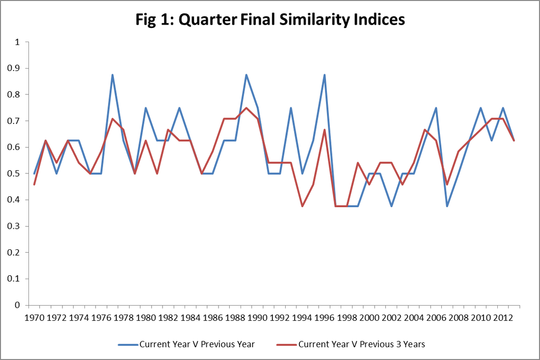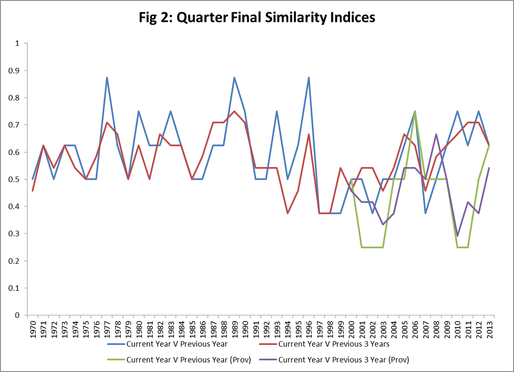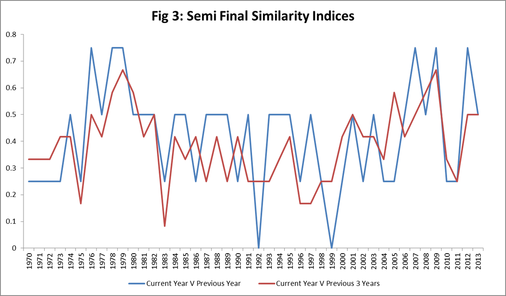Many have argued that the introduction of the new qualifier format in 2001 have benefitted the so-called stronger countries more so than the weaker counties. In short the qualifier format allowed losing teams in the provincial championships to enter the ‘qualifiers’ for a place in the All-Ireland quarter finals. To look at this is more detail, an index can be calculated based on how similar (or dissimilar) the counties that reach a particular stage are compared to the same stage the previous year. For example, if 5 teams that reach the quarter final stage in 2012, also reach the quarter final stage in 2013, the value of the index is 5/8 = 0.625. So if the value equals 1, the same teams are in the quarter final (or semi-final stage) as compared to the previous year. If the value equals 0, there are entirely new teams.
The index values are calculated from the 1970’s onwards to observe any differences in the long term trend. Three graphs based on the results of the analysis are presented below. The first is based on data of the teams that reached the provincial final (effectively the quarter final stage before the introduction of the qualifier format in 2001) or the quarter final stage post 2001. The second graph adds in the values of the indices using the teams that reached the provincial final from 2001 onwards. Essentially this presents a comparison between what happened and what would have happened without the change in format. The final graph is based on the teams that reached the semi-final stage of the championship.
Figure 2 is interesting as for most years post 2001, the ‘similarity’ of teams reaching the quarter final stage is higher under the new qualifier format than compared to the old provincial format (if that was continued). In the years 2009-2012, the gap is especially wide although it has closed again in 2013. There are only two years, 2007 and 2008, where the old provincial format generates a higher similarity index compared to the new qualifier format.
As Humphreys (2002) states “Competitive balance reflects uncertainty about the outcomes of professional sporting events” pg 133. So a Mayo win in the All Ireland Football final in four weeks’ time will be welcome from the neutrals perspective but it still doesn’t get around the potential problem that the GAA have where the top 8 and top 4 in the competition are getting easier and easier to predict.



 RSS Feed
RSS Feed